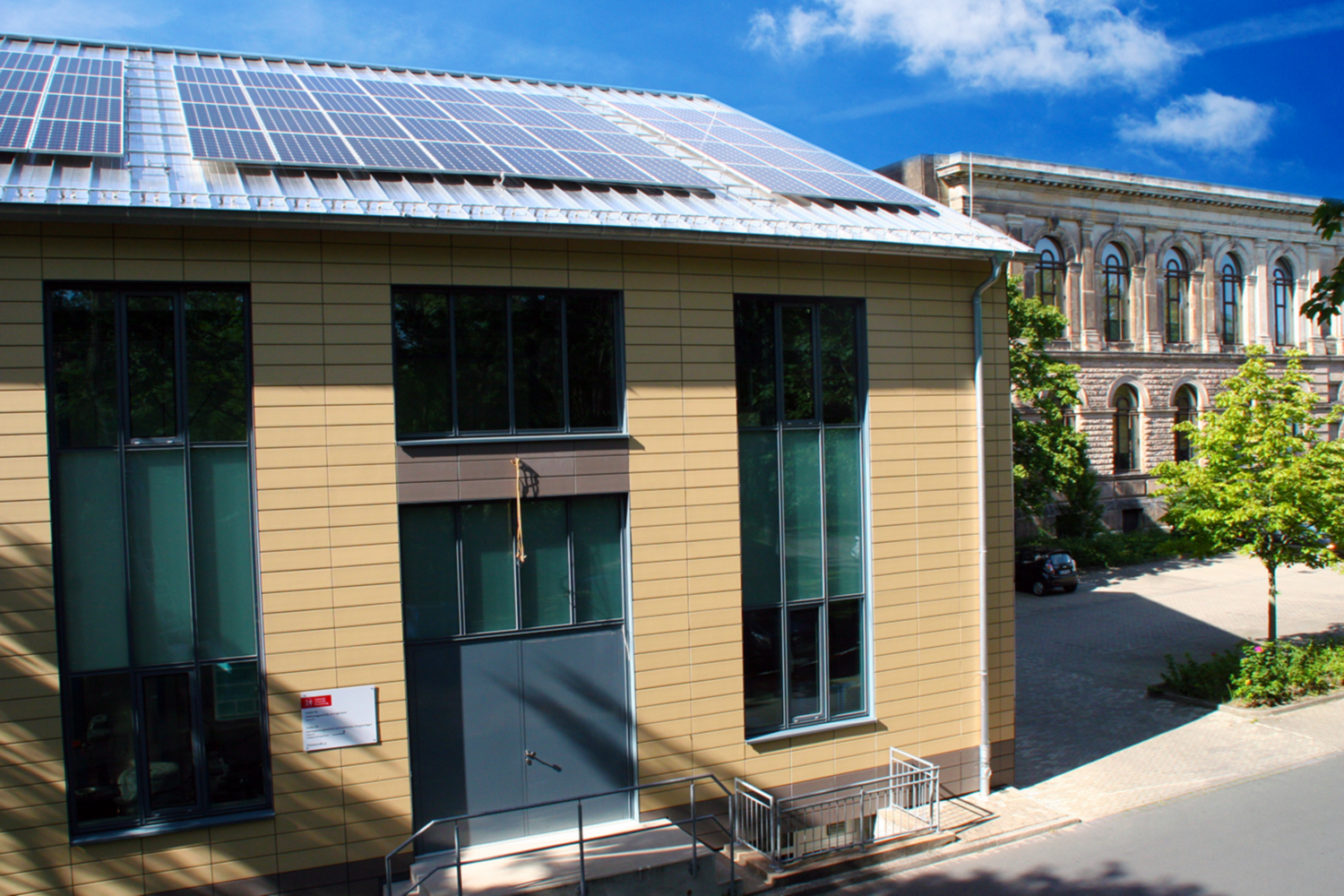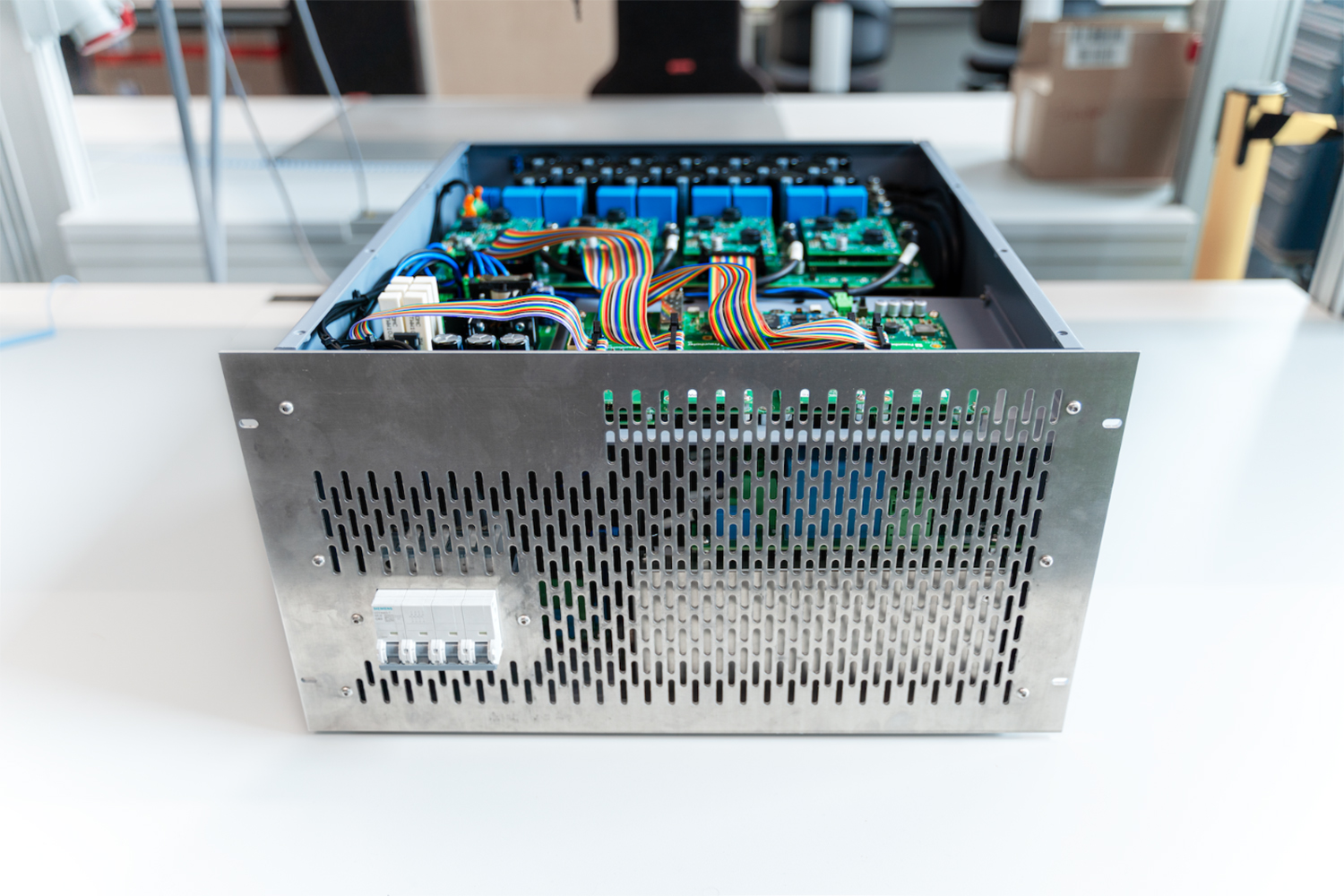Power converters can keep the interconnected grid stable even with very high shares of renewable energies Final conference of the "Netzregelung 2.0" project
Joint press release Fraunhofer IEE and TU Braunschweig
In the future, the power supply system can also be operated without the stabilising effect of the synchronous generators of conventional power plants. This was jointly stated by the experts of the research project “Netzregelung 2.0” at the final conference in Kassel on July 7, 2022. The joint project coordinated by Fraunhofer IEE, in which the team led by Professor Bernd Engel from TU Braunschweig is significantly involved, was able to show that power plants with grid-forming power converters can provide momentary reserve and thus stabilise the system even in extreme situations. At the end of the project, electricity grid operators will discuss the detailed results and questions about the introduction of the new technology with experts and representatives of the Federal Ministry of Economics and Climate Protection and the Federal Network Agency.

The photovoltaic system (with 14 kW installed capacity) on the old combined heat and power plant of TU Braunschweig is part of the research project Netzregelung 2.0. Photo credit: elenia/TU Braunschweig
Up to now, it has mainly been the synchronous generators of large power plants that have ensured that the frequency and voltage requirements in the electricity grid are met. With the energy transition, however, power plants are increasingly being replaced by wind energy and photovoltaic systems that are coupled to the electrical grid with power converters. The joint project “Netzregelung 2.0” coordinated by Fraunhofer IEE was able to show that power generating systems with grid-forming power converters can provide momentary reserve and thus stabilise the system even in extreme situations. At the final conference, electricity grid operators will discuss the results of the research project and questions regarding the introduction of the technology with experts and representatives of the Federal Ministry of Economics and Climate Protection and the Federal Network Agency.
The results of the joint project “Netzregelung 2.0” on regulation and stability in the converter-dominated interconnected grid contribute to the further development of application rules. The joint project, which started in 2018 and is now coming to an end, is funded by the Federal Ministry for Economic Affairs and Climate Protection with around 10 million euros.
Alexander Folz, Government Director in the System Security Division of the Federal Ministry for Economic Affairs and Climate Protection, states: “The Netzregelung 2.0 project has addressed key challenges for future system operation. The results come at exactly the right time for the Roadmap System Stability of the Federal Ministry of Economics and Climate Protection.”
“We are convinced that the interconnected grid – and in the event of a fault, subgrids as well – can be kept stable even with very high power converter shares. However, this requires suitable control procedures. We have determined the requirements for these procedures and developed control procedures to ensure that the power converters can serve a safe and stable system operation,” explains project manager Dr Philipp Strauß, deputy director of the Fraunhofer IEE in Kassel. Particular attention is being paid to devising a suitable transformation path. “New technologies must be seamlessly integrated into existing grid control processes. It is important to design the transition in such a way that the emerging system is at least as stable as the current one,” says Strauß.
Continental European interconnected grid in mind
The new control methods and their stabilising influence were simulatively evaluated under extreme scenarios, such as a system split – i.e. a grid separation across Europe. Severe voltage dips were not only calculated, but also carried out in the accredited laboratory according to existing standards. A particular challenge for the grid-forming power converters here are suitable and extremely fast current limiting procedures. The research teams were able to prove that even under such harsh conditions a contribution to grid-forming can be made.
Grid-forming properties are now also required of systems with very large power converters, which are used, for example, for reactive power compensation in the transmission grid or in head-end stations of high-voltage direct current transmission (HVDC). In addition, the project is to contribute to how these requirements can be mapped in the technical application rules for power generating systems in the future. In all of this, the project partners are also taking into account the international perspective – after all, the German electricity grid is embedded in the continental European interconnected grid.

Example in the kilowatt range (low voltage) for a grid-forming power converter that can also provide momentary reserve for stabilising the power grid: Fraunhofer IEE’s RICOSO power converter, rapid prototyping for control methods of power converters. Photo credit: Fraunhofer IEE
Research questions of the project
At the final conference, Philipp Strauß summarised the results on the research questions: “In the project, grid-forming control procedures with optimised current limitation procedures were further developed. A spatial distribution of grid-forming plants is necessary and momentary reserve can be provided in the transmission and distribution grid. New procedures for isolated network detection have been developed. Battery systems, wind turbines, photovoltaic systems, rotating phase shifters, statcoms and electrical loads, among others, can have a grid-forming effect with the new control procedures. A pure converter grid by grid-forming control is possible and the seamless transition with different shares of synchronous machines is realisable. A specification and new test procedures have been developed for, among other things, electrical inertia, grid-forming and damping.”
A central topic here is the interaction between power converters and synchronous generators. The partners analysed in which combination and at which voltage level synchronous generators as well as current-influenced or voltage-influenced converters are necessary or permissible in order to maintain system stability. In addition, the experts evaluated the voltage quality at the various operating points of the future system against the background that the share of synchronous generators will vary more and more with the further expansion of renewable energies. In this context, the experts also investigated which robustness requirements result from this for the voltage-imprinting controls.
Last but not least, they also addressed the question of the extent to which stable system behaviour is possible even with completely converter-based generation. In this way, the project makes an important contribution to achieving the German climate protection goals.
Further need for research
“The momentary reserve, which has so far come from the rotating masses of conventional fossil power plants and stabilises the grid frequency of the energy system, can also be effectively provided decentrally by grid-forming inverters in all voltage levels of the distribution grid,” specifies Prof. Dr. Bernd Engel from the elenia Institute for High Voltage Technology and Power Systems at TU Braunschweig. “In another research project, we want to address remaining technical challenges, such as possible power oscillations between the inverters, compatibility with existing protection devices and the risk of unwanted islanding.”
Project participants:
Representatives of all the main groups involved in grid control are represented in the project: In addition to the Fraunhofer IEE and Technische Universität Braunschweig, the University of Kassel, the distribution grid operator EWE NETZ GmbH, E-ON SE with its subsidiaries Westnetz GmbH and Mitteldeutsche Netzgesellschaft Strom mbH, the power converter manufacturers and system providers SMA Solar Technology AG and SiemensEnergy Global GmbH & Co. KG, the European Distributed Energy Resources Laboratories (DERlab e.V.) for international networking, the Deutsche Energie-Agentur GmbH (dena), the four operators of the German transmission grid and the Forum Netztechnik und Netzbetrieb (FNN) in the VDE as the institution defining the grid connection rules.
